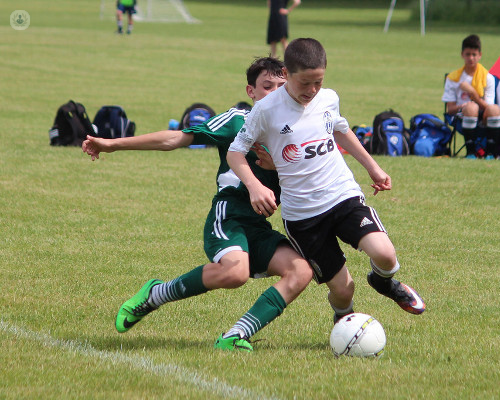


What is the posterior cruciate ligament?
The posterior cruciate ligament (PCL) is a ligament in the knee that connects the thigh bone (femur) to the shin bone (tibia). It is similar to the anterior cruciate ligament (ACL), but is bigger and stronger, however, it can be torn through injury, although injuries to the ACL are much more common.

Symptoms of a posterior cruciate ligament injury:
- Pain and difficulty walking
- Swelling
- Instability (your knee may give way)
Medical tests to diagnose a posterior cruciate ligament injury:
A specialist will firstly ask for a history or account of what may have caused the injury and how it happened. A physical examination will also be conducted, in which you will lie on your back with your injured knee bent. The specialist will press against the upper shin, and any abnormal knee movements usually indicate a PCL injury. X-rays will also help diagnosing a PCL injury and can indicate if any bone fragments have come loose. An MRI scan can show the exact location of the teat in the PCL.
What are the causes of a posterior cruciate ligament injury?
PCL injuries usually result when the knee is bent and is commonly caused by either car accidents or when falling on a bent knee. Sports injuries will often cause PCL injuries, such as football and skiing.
Can a posterior cruciate ligament injury be prevented?
It is impossible to avoid unforeseen injuries, but generally contact sports are the biggest risk factor for PCL injuries. Therefore, taking care whilst participating in these sports will help avoid injury.
Treatments for a posterior cruciate ligament injury:
Depending on the severity of the PCL injury and whether the injury has just happened or not, treatment will differ. Often surgery is not required.
Over-the-counter painkillers can help with pain and to reduce swelling. Using the RICE advice will help too:
- Rest – avoid putting weight on the injured knee.
- Ice – apply ice packs to the knee 3-4 times a day or a few days.
- Compression – an elastic bandage around the knee can help.
- Elevation – using a pillow to elevate the knee will reduce swelling.
Physical therapy will give you exercises to strengthen the knee. A knee brace and crutches may also be needed.
Surgery will be required if the injury is sever, or if other ligaments have torn or if bones have broken. Surgery will reconstruct the ligament. This can be performed either as open surgery, or arthroscopically, using an arthroscope.
Which type of specialist treats a posterior cruciate ligament injury?
An orthopaedic surgeon would treat posterior cruciate ligament (PCL) injuries.